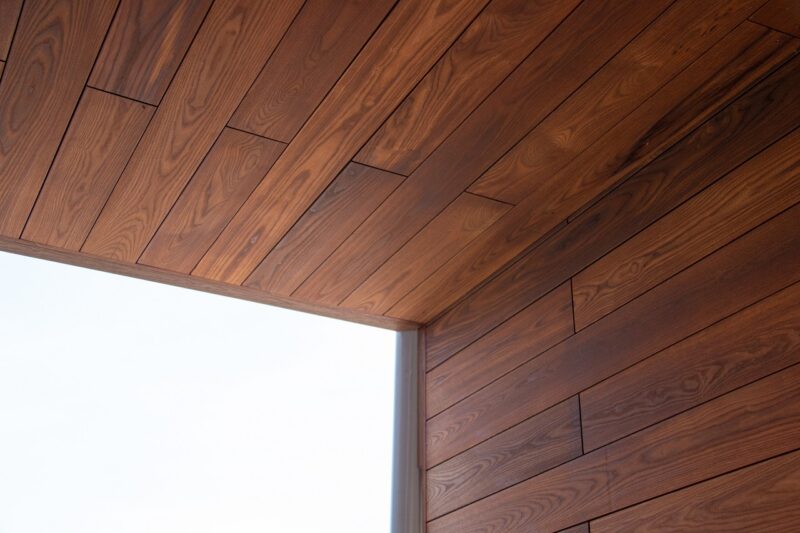Published: 28/02/24 By: Mike Bekin
Have you heard of ThermoWood? An innovative, high-performance modified timber, it has become a staple recommendation for projects which need a little extra oomph from their materials. But not a lot of people know much about it. That is why our EcoChoice timber experts thought it was about time we put together a quick, easy-to-understand guide looking at the timber thermo modification process. Let’s jump right in!
What is Thermo Modification?
Thermo modification is the process which uses controlled exposure to high temperatures to create a marked improvement in durability and stability of light weight timbers such as Pine and Spruce. ThermoWood has better resistance to decay, much better stability and is longer lasting than the untreated timber.
Use ThermoWood for decking, cladding and plenty more external applications.
The Thermo Modification Process
We know what thermo modification is, now it is time to see how the process works.
Selecting Timber
At EcoChoice, we only ever supply responsibly sourced timber from independently certified forests, including FSC-certified woodlands. That means that before the process begins, we make sure that the timber going into the kiln is from forests where conservation is always a priority. Although it is going to be modified, the timber chosen is also of good quality to ensure a premium piece of ThermoWood.
Kiln Drying
The selected timber undergoes an initial kiln drying process to reduce its moisture content. This step is crucial for the success of thermo modification as it prepares the wood for the subsequent high-temperature treatment. In other words, skip the kiln drying stage at your peril!
Heat Treatment
After being kiln-dried, the timber is put into a controlled environment with super-high temperatures. It is the heat itself which begins to change the wood’s cellular structure, turning it into a high-performance construction material. The absence of oxygen during this phase prevents the timber from combusting while promoting the desired changes in its physical and chemical composition.
Cooling and Stabilisation
After being heat treated, the timber then cools. But this is not as simple as leaving the wood by an open window! The step is still controlled, cooling it according to the thermo modification process so that the timber becomes stable and holds onto the new properties.
Inspection and Grading
Once the timber has cooled, it will be checked by professionals. This inspection is vital to ensuring it meets the desired standards for stability, durability and overall quality.
Why Choose ThermoWood?
Thermo modified timber brings a whole lot of benefits to your construction project. Aside from the enhanced durability, stability and resistance to decay, it is also a chemical-free method of treating wood which will earn your project plenty of green points. The timber retains its natural beauty, too, with the rich hues and grain patterns not lost to stains or oils.
There are several species, both hardwoods and softwoods, suitable for thermo modification, each with their own individual advantages:
- Frake
- Ash
- Redwood (Pine/Douglas)
- Spruce
- Radiata
Thermo modification is environmentally responsible, makes for longer-lasting constructions and has the look of timber straight from the forest. What is not to love?
Find ThermoWood at EcoChoice
We are proud suppliers of responsibly sourced ThermoWood. To learn more or start an order for your next project, get in touch with our friendly team and we will be more than happy to help.
Tags: thermo modification, ThermoWood
Categories: Insights
